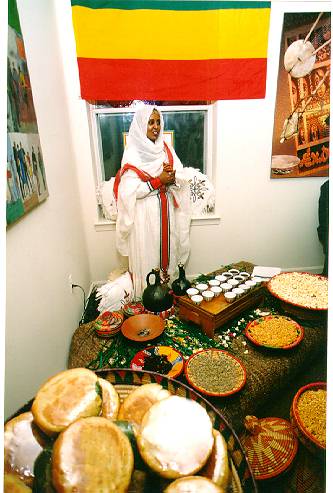![]() Mystical
Ethiopia
Mystical
Ethiopia ![]()
Land and Resources | Climate | Culture | Population | History | Historical Places | Religions | Government
Mystical Ethiopia | Addis Ababa | Economy | Emperor Haile Selassie | More Pictures
|
Land and Resources | Climate | Culture | Population | History | Historical Places | Religions | Government Mystical Ethiopia | Addis Ababa | Economy | Emperor Haile Selassie | More Pictures |
|
Culture The most significant area of Ethiopian culture is in the field of literature, represented predominantly by translations from ancient Greek, Arabic, and other languages into the ancient Geaz and modern Amharic. Most of the works are theological or mythological in nature. Secular literature is largely confined to history. Ecclesiastical architecture is relatively rich because of the early advent of Christianity in the country. Such structures and their frescoes usually show both Byzantine and Coptic influences. Ethiopia’s skillful and imaginative silversmithing is also notable. Language Of the 70 or more languages spoken in Ethiopia, most belong to the Semitic and Cushitic branches of the Afro-Asiatic family (see African Languages). The language of the Ethiopian church liturgy, Gecez, gave rise to the Semitic cluster of languages: Amharic, Tigrinya, and Tigre. Amharic, the country’s official language, is spoken by more than half of the population. English and Arabic are also spoken by many people. Education Education has expanded considerably since 1952, when only 4 percent of the adult population was literate. Since then, many schools have been opened, and several teacher-training schools have graduated numerous teachers. A major program to increase literacy was started in 1979; by 1990 about 77 percent of the adult population could read and write. Free education exists from primary school through the college level, but regular school facilities are available to only about one-third of the children of school age. In the early 1990s about 2.8 million students attended primary and secondary schools run by the government and religious groups. Addis Ababa University (1950) has branches in Awasa, Bahir Dar, Debre Zeyit, and Gonder. The ‘Alemaya University of Agriculture was founded in 1962. More than 21,000 students were enrolled in colleges and universities in the early 1990s.
|

|